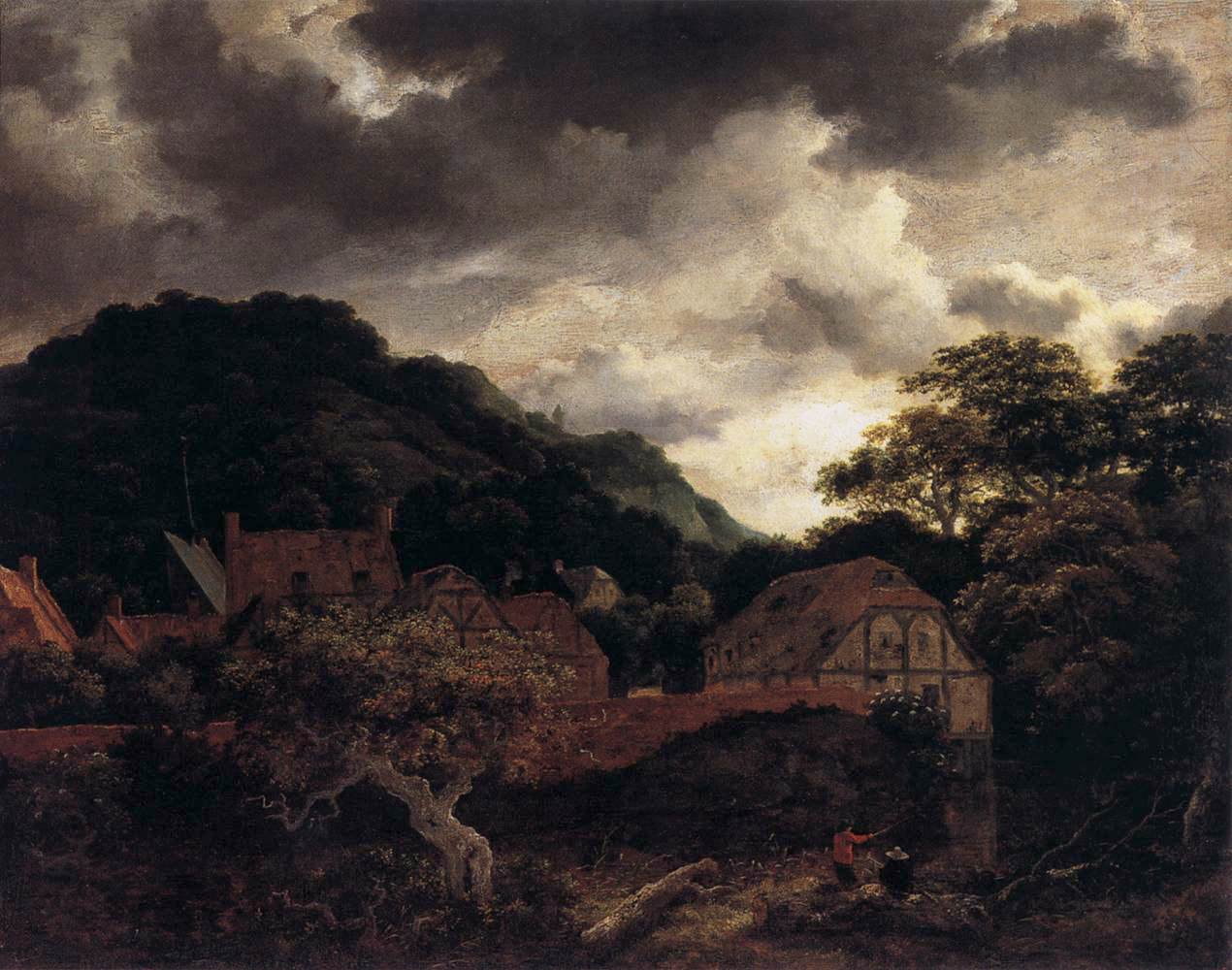Description
Jacob Isaackszon Van Ruisdael's Village at the Wood's Edge painting is a 17th-century masterpiece depicting a rural Dutch landscape. The artist uses his distinctive style of landscape painting, characterized by meticulous attention to detail and realistic depiction of nature.
The composition of the painting is impressive, with a panoramic view of the village located on the edge of the forest. Ruisdael used aerial perspective to create a sense of depth and distance in the painting, allowing the viewer to feel like they are looking down from a nearby hill.
The color in the painting is subtle and naturalistic, with a palette of earthy tones and greens that evoke the feeling of a rural landscape. The details in the painting, such as the leaves on the trees and the roofs of the houses, are carefully painted with fine and delicate brush strokes.
The history of the painting is interesting as little is known about its origin and its history prior to its acquisition by the Philadelphia Museum of Art. The painting was discovered in an antiques market in Europe in the early 20th century and is believed to have been owned by the Dutch royal family at one time.
As for the little-known aspects of the painting, some experts have pointed to the presence of a small windmill in the distance, which can be seen in the upper right corner of the painting. This detail is interesting as it suggests that the town depicted in the painting could be near a body of water, which would have been an important source of power for the mill.
In summary, the painting Village at the Wood's Edge by Jacob Isaackszon Van Ruisdael is a stunning work of art depicting a rural Dutch landscape with meticulous attention to detail and impressive composition. The painting is a remarkable example of Ruisdael's artistic style and is a little-known gem in the collection of the Philadelphia Museum of Art.

